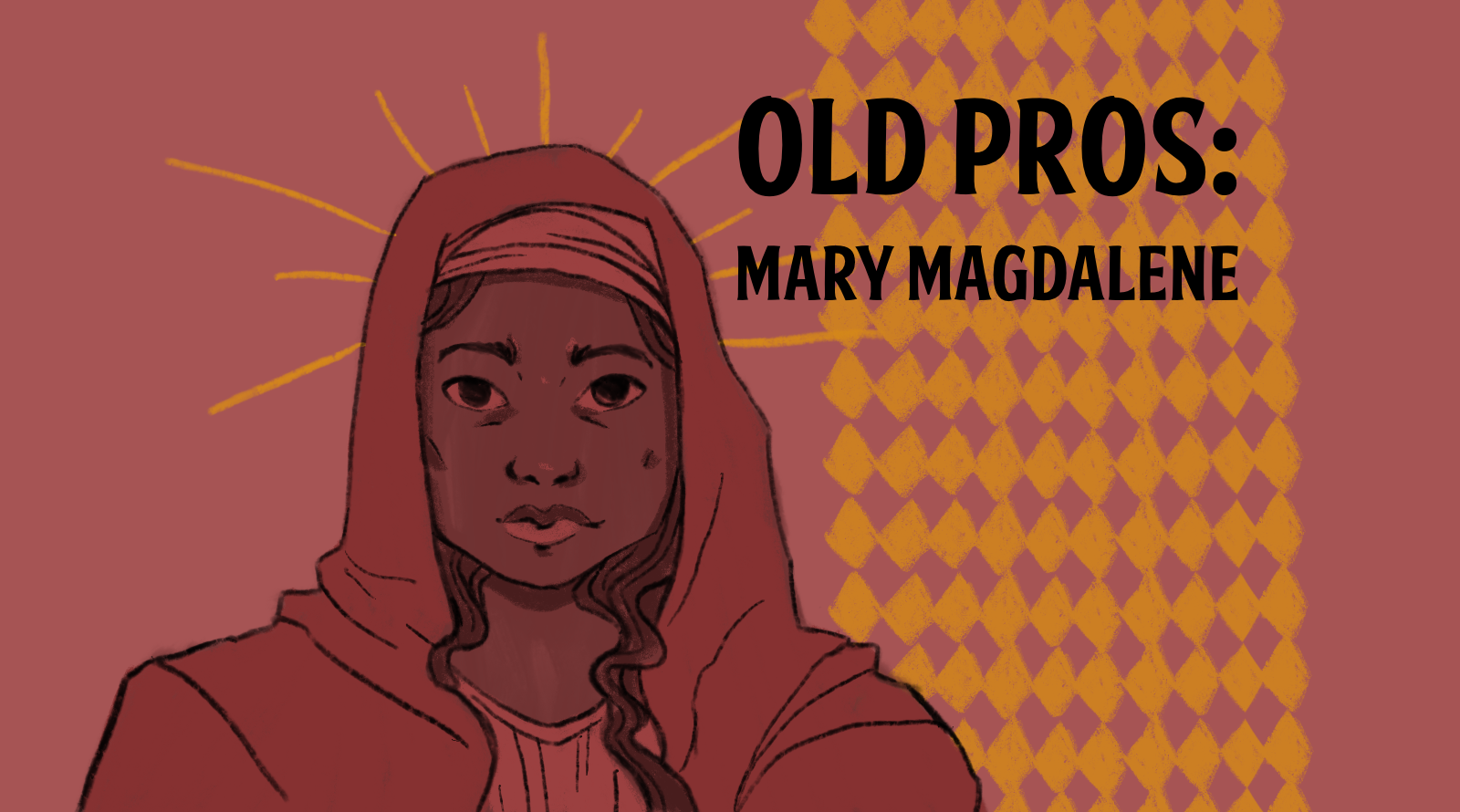Mary Magdalene is one of the most famous, mysterious, and perhaps controversial women of the Biblical texts. She’s been called a friend to Jesus, his partner, one of his most devout followers, the first Christian, and a sex worker. Who is Mary Magdalene and how did her story become aligned with sex workers around the world?
Mary Magdalene is one of the most famous, mysterious, and perhaps controversial women of the Biblical texts.
Mary (Myriam in Hebrew) was a Jewish woman born in the town of Magdala, about 100 miles north of Jerusalem. She’s first mentioned in the Book of Luke as a follower of Jesus; he had healed her by removing seven demons. These ‘demons’ could’ve been a physical ailment, mental health concern, one of a number of vices including greed, lust, or any other human failing. There is no evidence to suggest that Mary’s sins were sexual, or that she sold sexual services. There is some evidence to suggest that she came from a wealthy family, which would have historically made her less likely to have engaged in sex work or to have been prostituted.
Once Mary Magdalene had become a devoted follower of Jesus, she accompanied him to Galilee and according to all four canonical gospels, was witness to his crucifixion, burial and resurrection. Mary Magdalene is thought to be the first person to see the resurrected Jesus. She is described as the “woman who loved much,” and worked alongside Jesus as one of his most trusted disciples.
There is no evidence to suggest that Mary’s sins were sexual, or that she sold sexual services.
All it took to demote one of the most important figures in the early Christian church was for someone to call her a whore. In 591, Pope Gregory I labeled Mary Magdalene a “sinful woman,” conflating her and the two other Mary’s from the Bible. The first was Mary of Bethany who anointed Jesus’s feet, and the second was a Mary whom Jesus pardoned for adultery. Medieval poets, artists, and traveling theater troupes picked up and ran with this, thus building out the now well known but apocryphal trope. It took more than a thousand years, but in 1969, the Second Vatican Council corrected their mistake, yet most people still associate Mary Magdalene with the oldest profession.
So, what happened to Mary Magdalene? The answer to that question is an actual mystery and several theories have developed over the ages. Medieval theologians argued that she married John the Apostle. Western Catholics believe that Mary Magdalene moved to France and lived there for thirty years spreading the gospel until she retired to a cave. Eastern Orthodox Catholics believed she moved to Ephesus, modern-day Turkey, with Mary, the mother of Jesus.
Medieval poets, artists, and traveling theater troupes picked up and ran with this, thus building out the now well known but apocryphal trope.
What we do know is that Mary Magdalene was canonized as a saint and said to be redeemed by her faith. Her liturgical memory was raised from memorial to feast by Pope Francis in 2016, July 22. She is the apostle of apostles, the patron saint of hairdressers, converts, sexual temptation, and women. For old pros, that means that she looks after sex workers, too! Mary Magdalene’s story is a clear example that powerful women are often maligned as whores – whether they have ever sold sexual services or not – though we know this should not diminish them at all.





